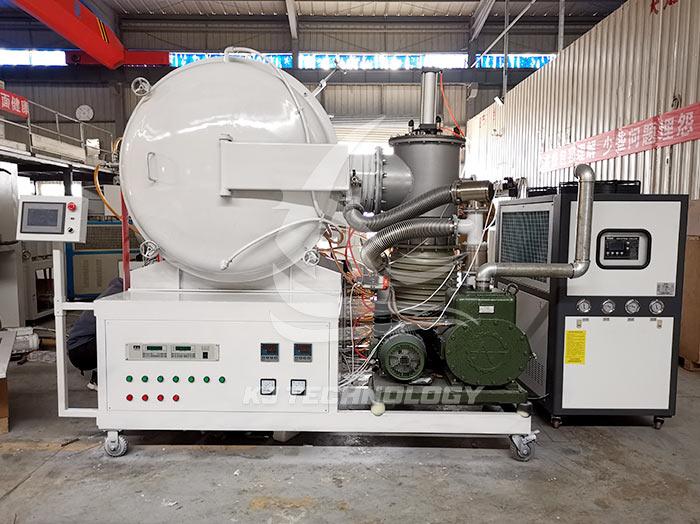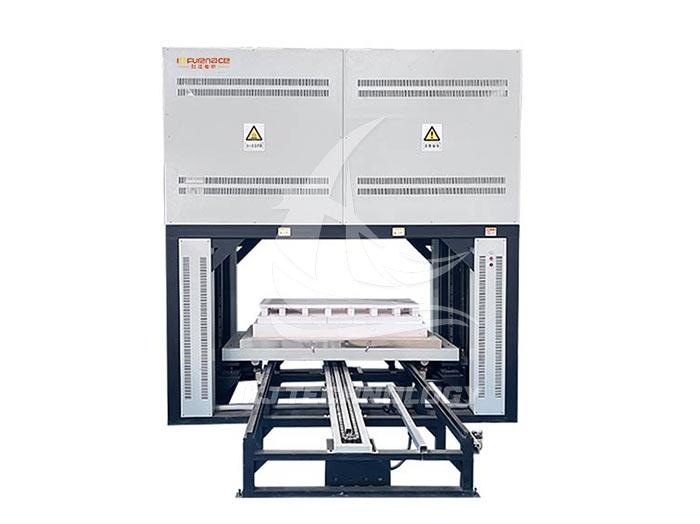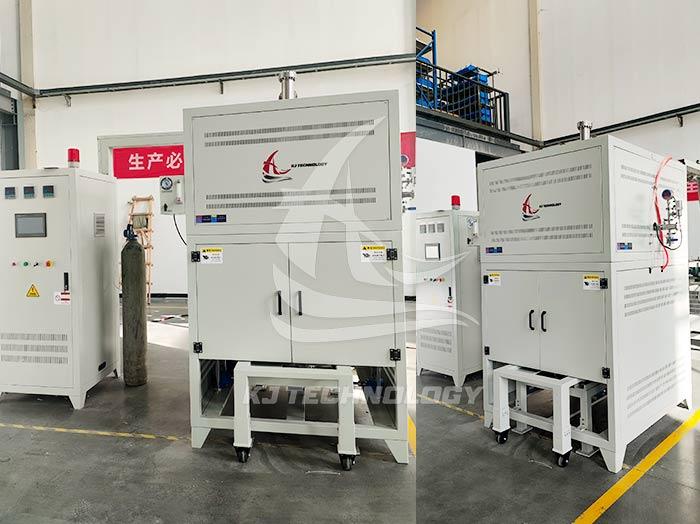Can a metal material vacuum sintering furnace sinter powder?
 06-20-2025 Author: KJ technology
06-20-2025 Author: KJ technology
The metal material vacuum sintering furnace is capable of sintering powders, which is one of its core functions. The following will explain the principles, advantages, application cases, and operational points:
1. The principle and applicability of powder sintering
Principle of Powder Sintering
The vacuum sintering furnace diffuses and fuses the surface of metal powder particles through high-temperature heating, forming a continuous metal structure. In a vacuum environment, the oxide layer between powder particles is removed, promoting atomic diffusion, thereby reducing sintering temperature and increasing density.
Applicable powder types
Elemental metal powders: such as iron, copper, titanium, tungsten, etc.
Alloy powders: such as stainless steel, high-speed steel, hard alloy (WC Co), nickel based alloys, etc.
Metal based composite powder: such as metal ceramic composite materials (such as Al ₂ O3 reinforced copper based composite materials).
Nano metal powder: It needs to be sintered under vacuum or inert atmosphere to prevent agglomeration and oxidation.
2. Advantages of sintering powder in vacuum sintering furnace
Prevent oxidation and pollution
A vacuum environment (below 10 ⁻ ³ Pa) can prevent metal powder from oxidizing at high temperatures, especially suitable for easily oxidizable metals (such as titanium and tungsten) and active metals (such as lithium and magnesium).
Reduce sintering temperature
The vacuum environment reduces gas obstruction, promotes atomic diffusion, and lowers the sintering temperature by 100-300 ℃ compared to traditional atmosphere sintering. For example, the vacuum sintering temperature of cemented carbide is usually 1350-1450 ℃, while traditional hydrogen sintering requires 1450-1550 ℃.
Improve density and performance
Vacuum sintering can eliminate pores and impurities between powder particles, resulting in a material density of over 99%, significantly improving hardness, strength, and wear resistance. For example, the hardness of hard alloy sintered by vacuum can reach HRC 92 or above, and the bending strength is ≥ 3000 MPa.
Control microstructure
By precise temperature control (± 1 ℃) and vacuum degree, grain growth and phase distribution can be regulated to avoid grain coarsening or segregation. For example, when preparing fine-grained hard alloys, vacuum sintering can suppress the growth of WC grains.
3. Typical application cases
carbide tool
Material: WC Co composite powder (tungsten carbide+cobalt).
Process: Vacuum sintering (1400-1450 ℃)+rapid cooling.
Effect: Hardness HRC 92, flexural strength ≥ 3000 MPa, tool life increased by 30%.
Titanium alloy parts
Material: Ti-6Al-4V powder.
Process: Vacuum sintering (1250-1300 ℃)+hot isostatic pressing (HIP).
Effect: Density 99.8%, tensile strength ≥ 1000 MPa, suitable for aerospace fasteners.
Tungsten and molybdenum products
Material: tungsten powder or molybdenum powder.
Process: Vacuum sintering (2000-2200 ℃).
Effect: Density of 19.3 g/cm ³ (tungsten), conductivity ≥ 50 MS/m, used for electron tube gate and high-temperature furnace heating elements.
Post processing of metal 3D printing
Material: Metal powder parts prepared by laser selective melting (SLM).
Process: Vacuum degreasing (500-600 ℃)+vacuum sintering (1200-1300 ℃).
Effect: Eliminate printing defects, improve density and mechanical properties.
4. Operation points and precautions
Powder pretreatment
Degassing: Pre degas the powder under vacuum or inert atmosphere (200-500 ℃) to remove adsorbed gases and moisture.
Granulation: Granulate fine powder to improve flowability and avoid uneven loading.
loading pattern
Uniform distribution: To avoid powder accumulation or segregation, graphite molds or packaging can be used for fixation.
Pressure sintering: For high-density materials, hot isostatic pressing (HIP) or compression molding techniques can be combined.
Sintering curve design
Heating rate: usually 5-10 ℃/min, to avoid cracking caused by thermal stress.
Insulation time: Adjust according to powder particle size and material type (such as 1-2 hours for hard alloys).
Cooling rate: Slow cooling (such as 5-10 ℃/min) or rapid cooling (such as argon gas quenching) to control the transformation of the structure.
Equipment maintenance
Regular cleaning: Remove residual powder and oxide layer from the furnace to avoid contamination.
Sealing inspection: Ensure that the vacuum system is leak free and maintain a high vacuum level.
5. Summary
Metal material vacuum sintering furnace is an ideal choice for powder sintering, especially suitable for the following scenarios:
High value-added materials: such as hard alloys, titanium alloys, tungsten molybdenum products.
Strict performance requirements: high density, low porosity, and excellent mechanical properties are required.
Easily oxidizable or reactive metals: such as titanium, tungsten, magnesium, etc.
By designing sintering processes and equipment parameters reasonably, vacuum sintering furnaces can significantly improve the quality and performance of powder metallurgy products, meeting the needs of high-end fields such as aerospace, medical equipment, and electronics.








